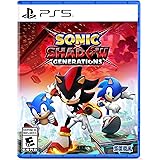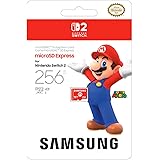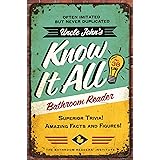Exploring Bizarre Game Boy Color Accessories: A Journey into Retro Peripherals
There is often a moment when one dusts off an old console, perhaps a cherished Game Boy Color, and reflects on the accessories that were available for it. As the video above interestingly points out, some of these additions were truly head-scratching. It leaves one wondering: were they genuinely useful, or simply a product of a burgeoning handheld gaming market eager to sell anything that could snap onto a console?
The world of Game Boy Color accessories was, at times, a wild frontier. Many peripherals were designed to enhance the experience, but others seemed to solve problems that did not exist, or perhaps, created new ones. Let us delve into some of the more curious inventions that once graced the shelves, aiming to make handheld gaming better, or at least, different.
1. The Curious Case of Button Enhancers for Game Boy Color
As was demonstrated in the video, one type of accessory that frequently appeared was the button enhancer. These plastic overlays were typically designed to snap directly over the existing directional pad and face buttons. The idea behind them, presumably, was to provide larger, more comfortable input surfaces. However, as it was observed, the original buttons were generally quite functional on their own.
It might be considered that for some players, especially those with larger hands, the standard Game Boy Color buttons could feel a bit small during extended play sessions. These overlays were meant to feel like an ergonomic upgrade, akin to putting a cushion on a wooden chair. Yet, often the tactile feedback was diminished, and the added bulk could make the console less portable. The responsiveness, which is crucial for precision gaming, was frequently compromised, turning a simple jump in a platformer into a guessing game.
2. Illumination and Magnification: Attempts to Improve Visuals
Before backlit screens became standard, playing a Game Boy Color in dimly lit environments was a challenge. This issue led to a boom in Game Boy Color accessories focused on illumination and magnification. These often came in various forms:
- Worm Lights: Flexible, snake-like lights that plugged into the Game Boy Color’s EXT port, shining light directly onto the screen.
- Screen Magnifiers: Often combined with lights, these plastic lenses would clip over the screen, purporting to make the visuals larger and easier to see.
While the intention was certainly noble, the execution was often flawed. A worm light, for instance, might create glare or uneven lighting, making some parts of the screen too bright and others still too dark. This was sometimes like trying to read a book by holding a flashlight at an awkward angle. Similarly, the screen magnifiers, though they made pixels appear larger, often introduced distortion or made the image blurrier, detracting from the crispness that even a small screen could offer.
3. Powering Up: External Batteries and Chargers
The Game Boy Color ran on AA batteries, and while their lifespan was respectable for the time, avid gamers knew the frustration of running out of power mid-adventure. This led to a range of external Game Boy Color accessories designed to extend playtime:
- External Battery Packs: These clipped onto the back of the console, providing additional power and often adding considerable bulk.
- Rechargeable Battery Systems: Some companies offered NiMH battery packs that could be recharged, a step towards modern console convenience.
These accessories were genuinely useful for some. Imagine being on a long car journey; a battery pack could mean the difference between conquering a final boss and a screen going blank. However, they were often cumbersome, altering the console’s balance and making it less comfortable to hold for extended periods. The bulkiness of these power solutions was often traded off against the desire for continuous gaming.
4. Sound Solutions: External Speakers and Headphone Adapters
The Game Boy Color’s internal speaker was functional but not renowned for its audio fidelity. This opened the door for Game Boy Color accessories that promised an improved sound experience:
- External Speakers: Small, portable speakers that clipped onto the console, offering louder and sometimes slightly clearer audio.
- Stereo Headphone Adapters: Some games offered stereo sound, but the GBC only had a mono headphone jack. Adapters aimed to rectify this.
While an external speaker could make the game’s soundtrack more prominent, it rarely delivered a high-quality audio experience; it was often just louder, similar to shouting into a tin can instead of speaking clearly. The headphone adapters, on the other hand, offered a more subtle improvement, allowing players to fully immerse themselves in the game’s soundscape, a small but appreciated refinement for those who valued audio depth.
5. The Whimsical and Niche: Carrying Cases and Link Cables
Beyond the functional and the questionable, there were Game Boy Color accessories that served specific purposes or simply added to the aesthetic appeal:
- Carrying Cases: Ranging from simple pouches to elaborate hard cases, these were essential for protecting the console and games.
- Link Cables: Crucial for multiplayer gaming, allowing two or more Game Boys to connect for competitive or cooperative play.
These types of Game Boy Color accessories were perhaps the most universally accepted and truly useful. A good carrying case was like a sturdy suitcase for your gaming adventures, protecting your beloved console from the perils of backpacks and accidental drops. The link cable, however, was transformative. It fostered social gaming, allowing friends to battle in Pokémon or race in Mario Kart, turning a solitary experience into a shared one. It was a simple cable, yet it was the conduit for countless hours of collaborative fun.
Reflecting on the vast array of Game Boy Color accessories, it becomes clear that the market was ripe for experimentation. From the “button thingy” that sparked the initial video’s curiosity to practical carrying cases, each accessory tells a story about the era of handheld gaming and the perpetual quest to enhance the player’s experience. Even if some inventions were peculiar, they are now a nostalgic part of Game Boy Color history.









